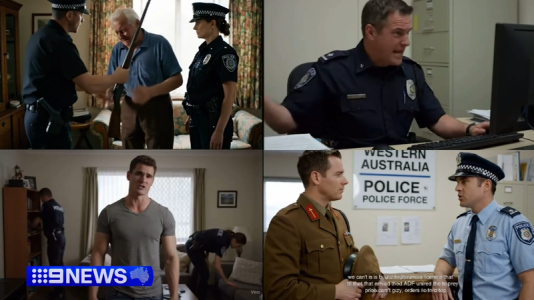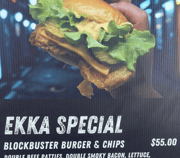‘It is really concerning’: How fake police videos are fuelling gun law debate
By
Maan
- Replies 0
A series of unsettling AI-generated videos have stirred controversy in Western Australia.
The clips feature fake police and soldiers making bizarre claims about the state’s firearm laws.
Authorities say the misinformation is fuelling unnecessary tension among locals.
One video showed a supposed police officer standing alongside an Australian Defence Force soldier, claiming firearm licences could not be granted to defence personnel ‘unless they can prove they aren’t crazy’.
Another depicted officers wrestling a shotgun from an older man’s hands, adding a dramatic—and false—narrative to the legislation debate.
Consumer Protection warned the public to watch for tell-tale signs of the deepfakes, such as incorrect uniforms, missing fingernails, strange signage, and a watermark from the AI video tool VEO.
‘It is really concerning because it is misinformation that is causing a lot of heated debate in the community unnecessarily,’ Consumer Protection Commissioner Trish Blake said.
The videos, posted on social media by a group calling itself Western Australia Firearms Licence Holders, targeted the recently introduced firearm regulations.
Officials stressed that the clips were entirely fabricated and intended to mislead viewers about the specifics of the law.
Watch the full report below.
Source: Youtube/9News
Spotting the telltale signs of a fake AI video can be tricky, especially when the content is designed to look real—just like in the WA Police deepfake controversy.
Watch this quick, eye-opening clip and see if you can spot the fakes yourself.
Source: Youtube/Corridor Crew
The controversy over fake police videos isn’t the only example of AI being used to mislead and manipulate.
Well-known public figures have also found themselves targeted by deepfake technology in ways that can damage reputations and trick unsuspecting viewers.
One recent case saw familiar faces speaking out after being digitally impersonated to promote products they never endorsed.
Read more: More celebrities are speaking out against 'deepfake' scams

When even fake uniforms and missing fingernails can spark outrage, how can communities safeguard truth in the age of deepfakes?
The clips feature fake police and soldiers making bizarre claims about the state’s firearm laws.
Authorities say the misinformation is fuelling unnecessary tension among locals.
One video showed a supposed police officer standing alongside an Australian Defence Force soldier, claiming firearm licences could not be granted to defence personnel ‘unless they can prove they aren’t crazy’.
Another depicted officers wrestling a shotgun from an older man’s hands, adding a dramatic—and false—narrative to the legislation debate.
Consumer Protection warned the public to watch for tell-tale signs of the deepfakes, such as incorrect uniforms, missing fingernails, strange signage, and a watermark from the AI video tool VEO.
‘It is really concerning because it is misinformation that is causing a lot of heated debate in the community unnecessarily,’ Consumer Protection Commissioner Trish Blake said.
The videos, posted on social media by a group calling itself Western Australia Firearms Licence Holders, targeted the recently introduced firearm regulations.
Officials stressed that the clips were entirely fabricated and intended to mislead viewers about the specifics of the law.
Watch the full report below.
Source: Youtube/9News
Spotting the telltale signs of a fake AI video can be tricky, especially when the content is designed to look real—just like in the WA Police deepfake controversy.
Watch this quick, eye-opening clip and see if you can spot the fakes yourself.
Source: Youtube/Corridor Crew
The controversy over fake police videos isn’t the only example of AI being used to mislead and manipulate.
Well-known public figures have also found themselves targeted by deepfake technology in ways that can damage reputations and trick unsuspecting viewers.
One recent case saw familiar faces speaking out after being digitally impersonated to promote products they never endorsed.
Read more: More celebrities are speaking out against 'deepfake' scams
Key Takeaways
- AI-generated videos falsely claimed defence personnel could not obtain firearm licences.
- Consumer Protection identified visual errors that gave away the fakes.
- The deepfakes were posted by a pro-firearms social media group.
- Authorities warned the misinformation was creating unnecessary community conflict.
When even fake uniforms and missing fingernails can spark outrage, how can communities safeguard truth in the age of deepfakes?








